
It’s always exciting when a new Nintendo franchise makes it to North America. These days it doesn’t happen very often, so when Nintendo announced it would be porting the Famicom Detective Club duology to North America after 33 years, it was something of a shock. These games were originally released in 1988 and 1989 respectively on the Famicom Disk System, a disk based expansion for the Nintendo Family Computer System, the Japanese counterpart to the NES. Additionally, they were both created by Yoshio Sakamoto, one of the creators of Metroid and produced by Gunpei Yokoi, the designer of the Game Boy, giving this series a significant pedigree. Neither the Disk System nor the Famicom Detective series ever made it to North America though, making this release a particularly special treat.
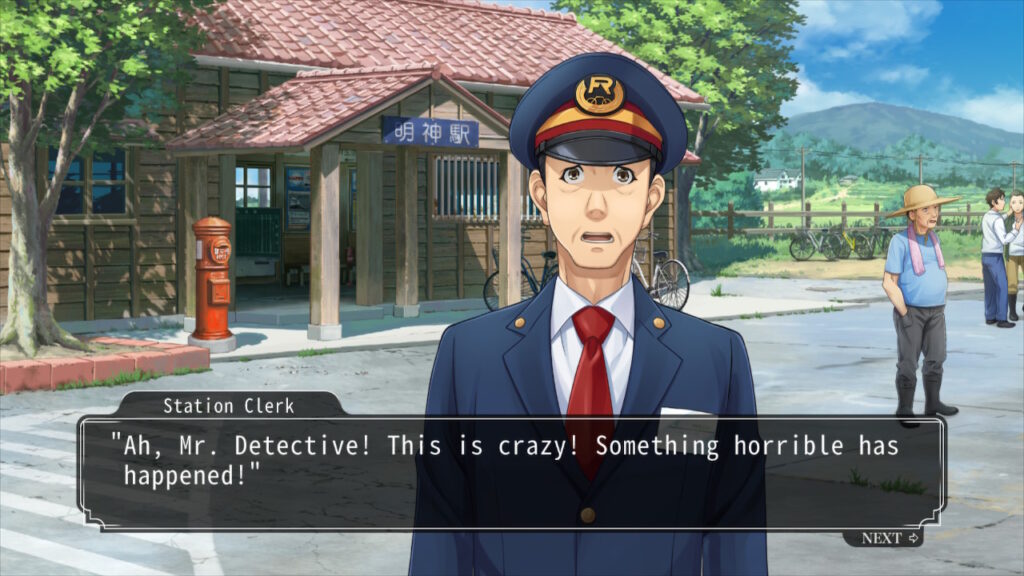
It’s no surprise that the Famicom Detective Club series is only just now coming to North America either. There has been something of a gaming renaissance happening over the last decade or so, with a huge rise in visual novels and heavily Japanese-oriented content is increasing in popularity. Both games are two of the earliest examples of visual novels and Nintendo has definitely realized the potential of the genre. In fact, they enlisted one of the best studios in the business, Mages, in order to put the proper amount of polish on these two decades-old Famicom titles. Mages is probably best known for their popular Steins; Gate series, but has a wide variety of spectacular visual novels available and this is a dream team-up for VN fans. But that’s enough backstory. Let’s become Famicom Detectives!
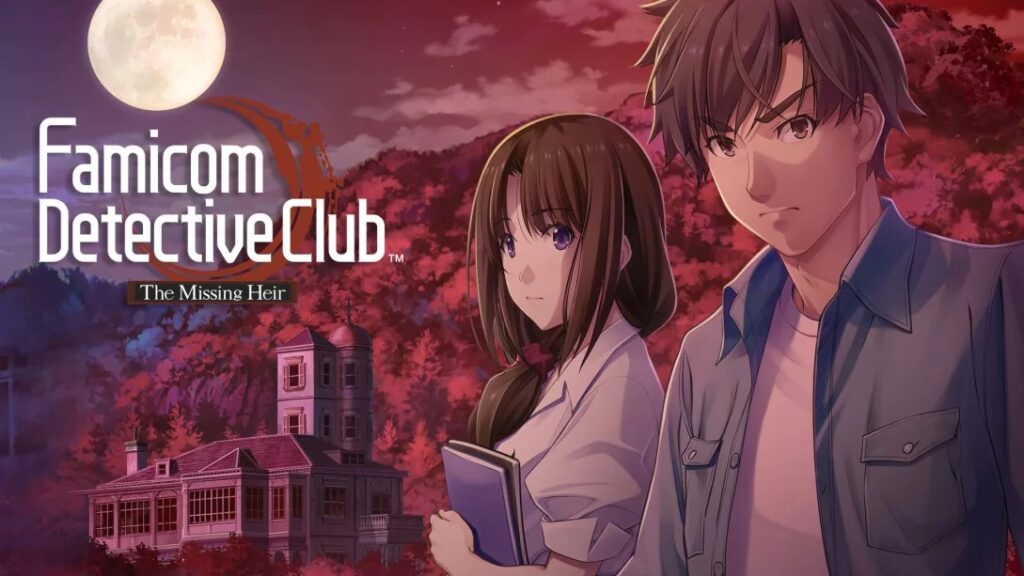
Famicom Detective Club: The Missing Heir (originally released in 1988)
You wake up confused with no idea what’s going on and are promptly informed that you’ve fallen from a large cliff. You have no idea who you are, where you are, or what’s going on. Now, the amnesia trope has certainly been done to death, but to be fair, 1988, so Nintendo definitely gets a pass here. You’ll quickly find that you are actually employed at a detective agency and one of your coworkers helps you to get your bearings. At that point, it’s time for you to return to the case. But how do you do that without your memory?
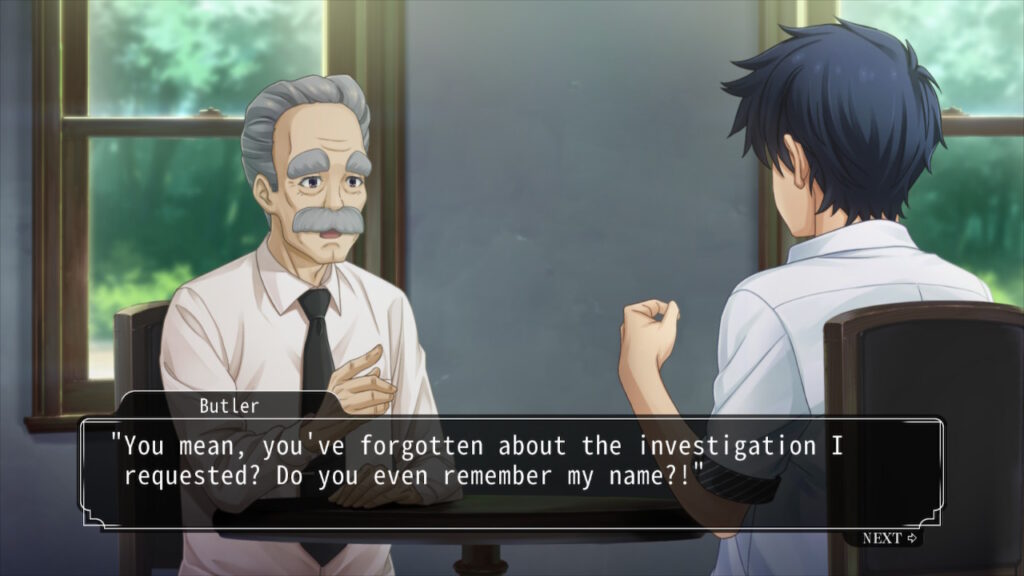
The Missing Heir is a complex and richly Japanese story and it’s clear that this is why Nintendo did not market it to North American audiences over 30 years ago. As you piece together the tapestry of the Ayashiro family and the death of their matriarch, you’ll discover interesting details, complex relationships, and even perhaps a few supernatural surprises. The dialogue is realistic and the reactions of characters are incredibly well-written, leaving one to wonder how close to the original script this modernized version of the game is.

However, not everything is perfect with The Missing Heir. The pacing is quite slow in this mystery, dragging out sections of plot far longer than they should probably be. And while the dialogue is excellent, it’s also not the most engaging, often for whole chapters at a time. It’s a shame because the obvious care that has been taken to preserve the original content for a modern Western release also reveals the age of the game and might end up a miss with some audiences. Characters in the game are solid however, and there are some fun and fishy personalities floating about throughout the course of the game, as well as a smattering of humor, though not quite enough. However, the main issue isn’t with the slow-paced story, but instead the gameplay itself. It’s not a bad game by any means, but The Missing Heir is still a game that feels old on several levels.

When you start playing Famicom Detective Club: The Missing Heir, you will quickly find that the control scheme is rather less modern than it should probably be. There is no touch screen interface whatsoever, something that’s standard on most Switch visual novels. There’s also no stick advance option, forcing you to hit buttons for every line of dialogue or set the game to auto, advancing the dialogue for you. Sadly, this function advances the text quite slowly as well, so you might as well hit to button pressing. The ability to review the transcript is thankfully included, as is a fast advance option that moves quickly if you decide to go back to a previous save and don’t want to read everything again, but those are the extent of reading options.
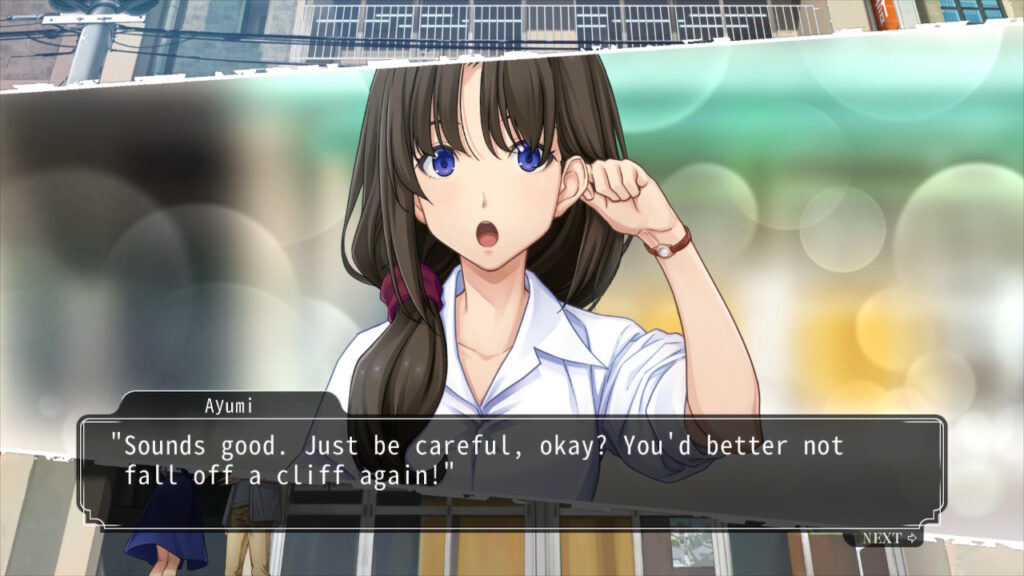
Those might not sound like big issues but constantly hitting the A button to read everything can get old fast and there’s a slight hesitation for text to load with each dialogue box in the game which drastically slows overall reading speeds, even when display is set to instantaneous. What this all adds up to is a lot of short wait times that can build to slow the pacing of an already slow game down even more. Fortunately, you can save almost anytime, even though the option to save is oddly labeled as Quit Investigation. Don’t worry, you don’t actually have to quit when you select it!
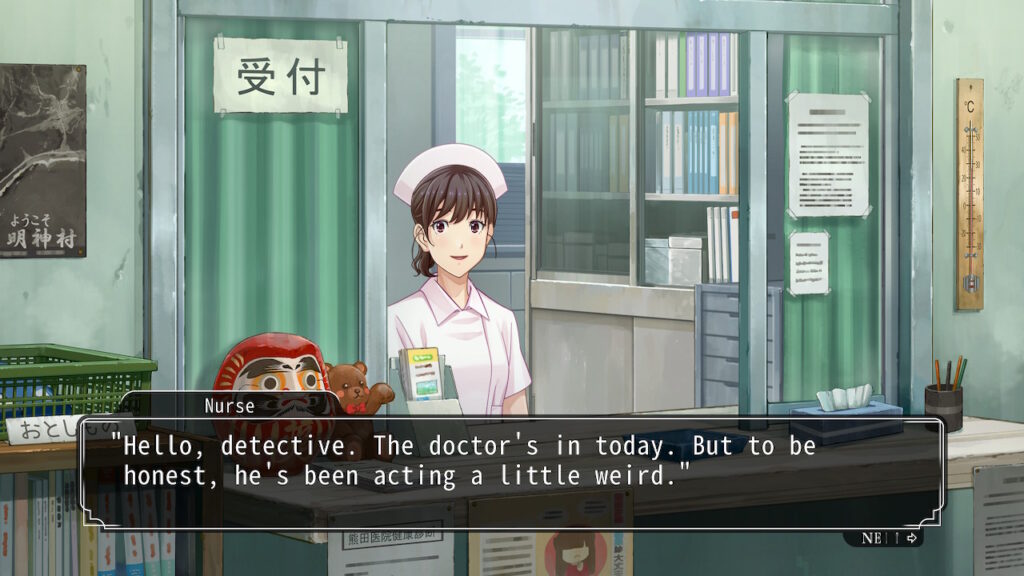
But even all that pales in comparison to the overall poor menu design of The Missing Heir. In order to progress in the game, you must select options from a menu system. Those options vary from Travel to Call/Engage to Look/Examine, Show, Take, Talk and more. Depending on the situation, some options disappear at some times and reappear at others. The game indicates key actions with yellow highlighting, but it only does it some of the time, leaving it up to the player to figure out what to do next. Here is where we run into the biggest issue with The Missing Heir and one that we can only assume is related to the age of the game.

Much like a Phoenix Wright game, you are unable to progress in the game until you select the right option in The Missing Heir. But as that option is not always apparent, you’re left to slowly go through the options one by one, talking to each person, looking at each object, and trying to remember what happened to you over and over in order to progress in the story, even if it’s absolutely obvious and clear what is happening and what you are supposed to do. Sometimes, that just means talking to someone over and over again even if they tell you not to. At other times, it means that you have to select a background object with the Look command. But those items aren’t highlighted in any way, so you’ll end up just selecting things over and over until you trigger the next new response or event, tediously re-reading the same text over and over. Eventually you’ll reach a point where you can no longer progress any further no matter what you select, which is when you open the Notepad.
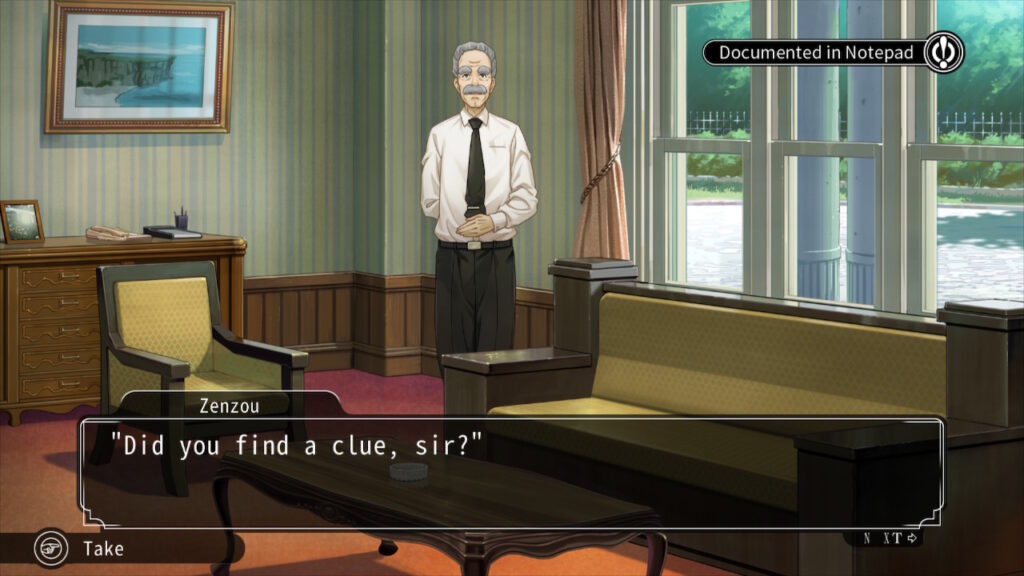
The plus button on the controller opens a notepad that arranges all the notes about the characters in the story in order for you. When a new item is added, that person’s name turns yellow. You then have to read through their file to refresh yourself on the new information. Unfortunately, the only way to progress in the game is often to open the notepad, skim through all new information, close the notepad and then cycle through your repetitive discussions once again until you get a new response or insight into the case. After a while, this becomes so routine that you’re simply skimming and not reading, ignoring what people say and just trying to get things moving again. Since only about 50% of the selections are intuitive and guided by paying attention to the situation and the rest seem to be completely random, there’s a lot of gameplay simply wasted replaying the same conversations over and over for no apparent purpose.

This pattern is repeated with some of the locations you’re forced to visit, making you talk to the same villagers and supporting characters over and over and over again to glean a single item of information that isn’t even key to let you come to a conclusion you already made. The simple fact is that this is a 33 year old game and the overall gameplay design shows it very clearly the further you play. Oddly enough, the storyline gets more interesting at roughly the same rate, so that as you get more frustrated fighting the design of the game, the plot picks up along with it just enough to keep you playing. It’s a weird balance that’s both satisfying and unsatisfying at the same time.
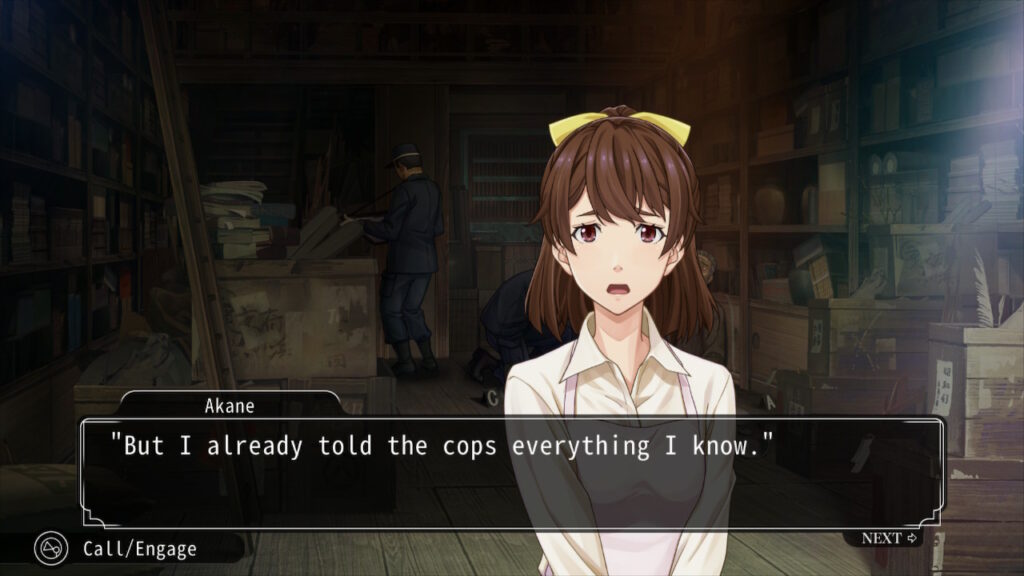
However, no matter how frustrating the interface and lack of touch controls might be (especially since your cursor is SO slow in look mode), you can’t fault Nintendo and Mages in the graphics and sound department! This is an excellent looking game and the character models are crisp and clean across the board. The Mages influence is clearest here, with subtle movements of hair and eyes, shoulder shrugs, lip movements, and assorted background animations that add depth and life to even the most mundane of scenes. The Missing Heir is an absolutely gorgeous visual novel by any standard and key scenes are rife with details that make you feel like you’re in Japan. Character designs are excellent and everyone looks like they stepped right out of a triple A anime and straight into the game. The detail level of the visuals in The Missing Heir is simply fantastic and there are plenty of scenes where you’ll clear the text on the screen just to look at the outstanding imagery.
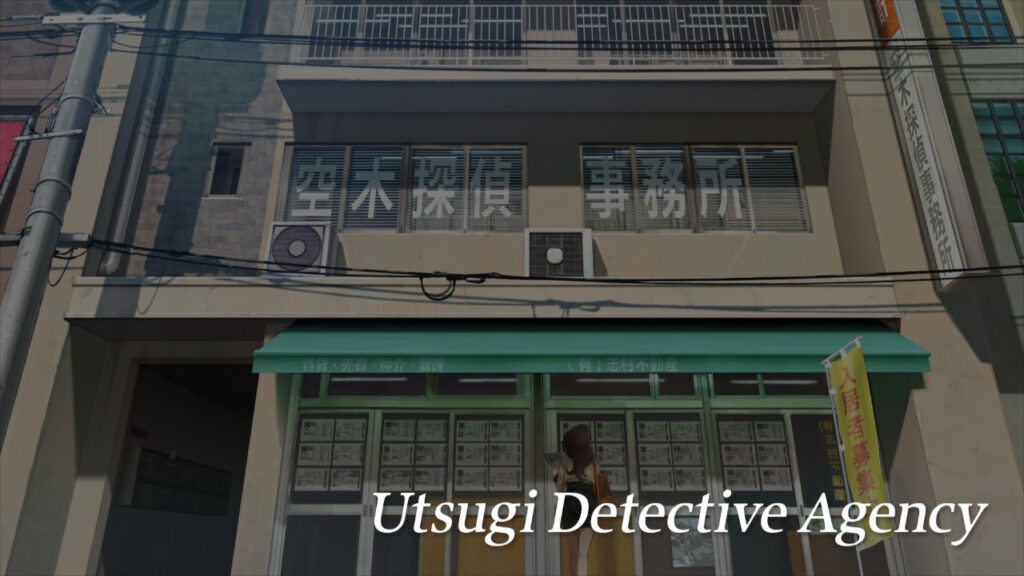
On top of that, the soundtrack Is quite good, with traditional Japanese music, tonal shifts for plot twists, solid sound effects, and even auditory indicators at key points in the gameplay. The composition quality is really excellent, only falling prey to the inevitable issue of repetition, especially if you’re stuck trying to find the trigger menu selection to get things moving. However, a vintage Famicom soundtrack was thoughtfully included and can be switched to at any time to refresh the background sounds, changing the overall feel of the soundtrack and gameplay drastically. Speaking of sound, there’s a complete Japanese dub for the entire game and the voice acting is simply tremendous. Characterizations come through loud and clear with excellent range and it’s obvious that no expense was spared here, even for those of us that don’t speak Japanese. If you read fast, you might want to turn the voices off, simply to save time, but the artistry involved in the voice casting makes it worthwhile, especially for some of the key plot scenes. Rarely do visual novels look or sound this good, and the only admittedly minor complaint is that there’s no English dub, a non-issue for most people that will buy The Missing Heir.

As you can probably see by this point, Famicom Detective Club: The Missing Heir is a bit of a mixed bag. At $35, you’re paying a premium price for a digital-only title that has been lovingly restored and updated, created by some of the legends of the Japanese video game industry. At the same time, you’re also getting a 33 year old game that has some antiquated options for story progression that have been preserved as well, along with a lack of touch contextual controls and no ability to reconfigure button options. There’s a well-written script but the pacing is dated and rather slow, especially for today’s audiences. The plot is enjoyable, but there are a few tropes that naturally haven’t aged well. This is the very definition of a mixed bag title and chances are high that people will be pretty polarized by The Missing Heir. Overall though, this is a solid story with some frustrating design issues and some delightful surprises both in plot and gameplay. Things might be perhaps a mite predictable here and there but most players are likely to be satisfied…if they enjoy the visual novel genre.
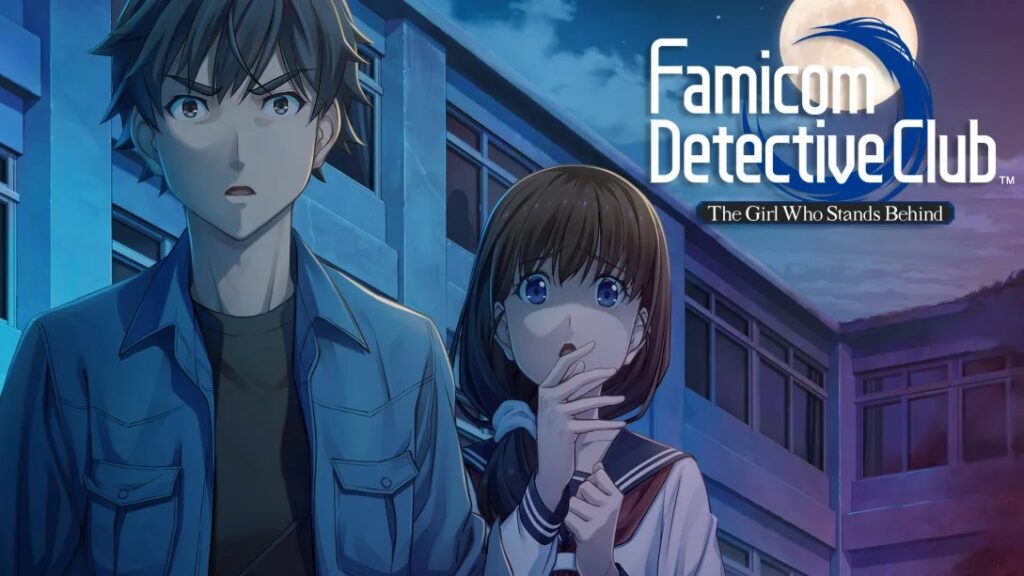
Famicom Detective Club: The Girl Who Stands Behind (originally released in 1989)
Interestingly enough, the second game in the series, The Girl Who Stands Behind, starts out significantly better than The Missing Heir. Right from the beginning, pacing is better, the game is more visually dynamic, and the atmosphere has a suitably mysterious and creepy vibe to it. The Girl Who Stands Behind, while coming out a year later, is actually a prequel to The Missing Heir and we find out the history behind the team at the Utsugi Detective Agency, including the backstory of our protagonist.
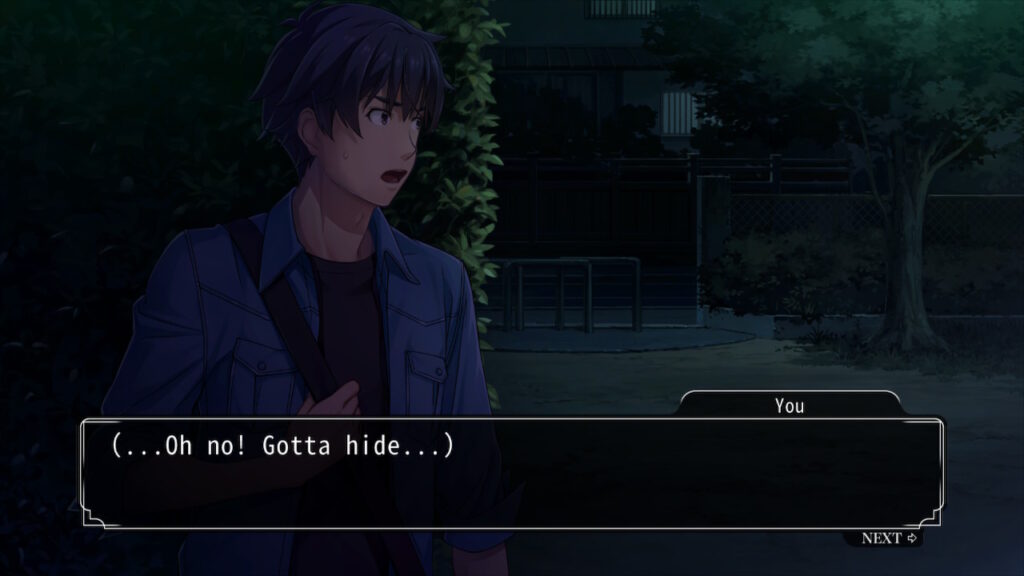
The differences don’t simply extend to a better introduction though. The Girl Who Stands Behind feels more like a Japanese ghost story than anything else, channeling a distinct feel of horror games and imagery that is conspicuously absent in The Missing Heir. The change in scenery, plot, and atmosphere is a positive one, leading to a noticeable rise in engagement in the storyline right from the beginning. Additionally, while the overall interface is preserved from the first game, The Girl Who Stands Behind manages to utilize that interface better, with selections to advance the story being more intuitive overall and leading to a smoother flow to the gameplay. This might be due at least partly to familiarity with the menu system from playing The Missing Heir, but even if not, the selections that you must make are less obscure than those in the first game and players are less likely to get stuck.
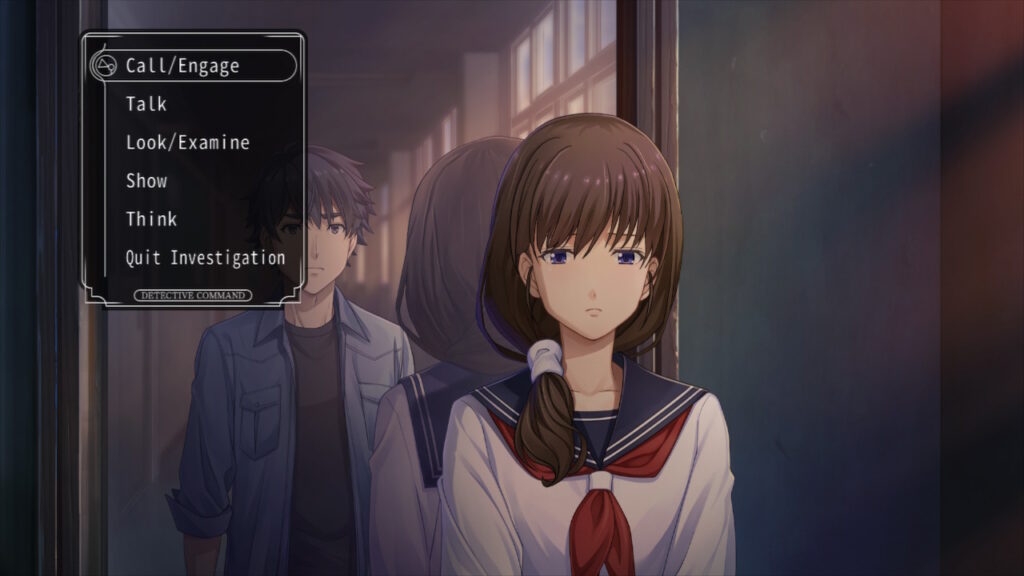
The overall plot of The Girl Who Stands Behind is interesting, the characters are a good mix of familiar and new, and the obvious leads taken from The Missing Heir make the story more fun. There’s still death and a taste of the supernatural surrounding our protagonist but this time things aren’t quite as predictable and the suspense is amped up a bit, leading to a better experience. Chances are good that The Girl Who Stands Behind will be closer to what most players were expecting from both of the Famicom Detective Club games, but there are also a multitude of small crossover references tucked away in the second game for those who played through the first. There are even several little nods to the series’ history tucked away for players that are paying attention, little mentions of the Famicom hidden away here and there as fun little easter eggs that don’t ruin story immersion.

Visuals in The Girls Who Stands Behind follow the same pattern of improvements from the first game that the plot has, with visual effects in slightly more lengthy cinema style sequences and the same high quality character animations. There aren’t many real cinemas in either game, but there are definitely sequences with higher animation levels and they really look great here. For a game that only came out a year later, there’s a noticeable uptick in polish across the board, and it’s interesting that Nintendo and Mages decided to preserve that distinction rather than upping the bar in The Missing Heir as well. Perhaps it would have ruined the overall feel of the game but there’s probably a missed opportunity there. Regardless, The Girl Who Stands Behind looks amazing and manages to capture the darker essence of the story a bit better than The Missing Heir.
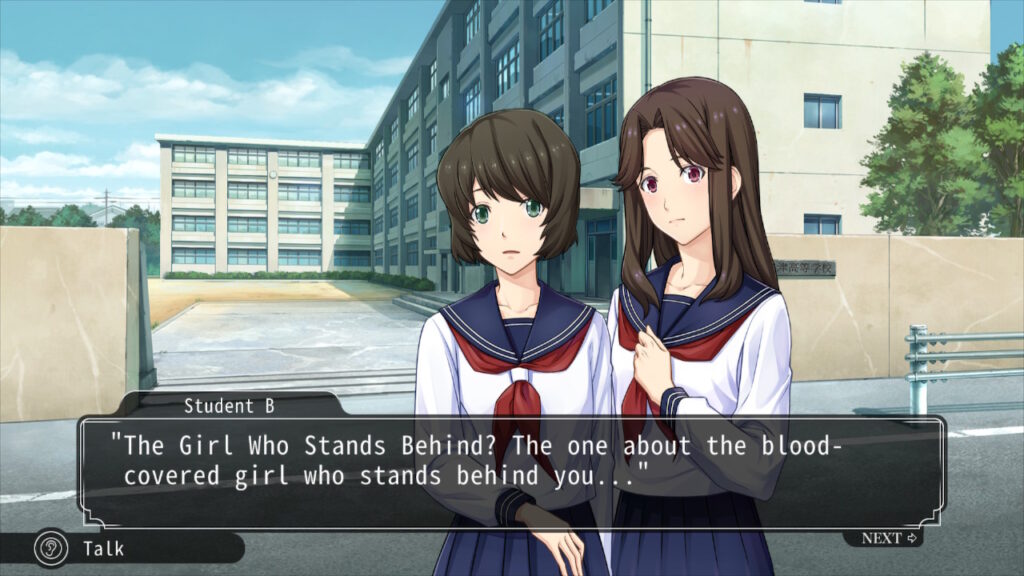
Sound design is equally good with the same attention to detail as the previous game. In addition to the Famicom soundtrack, there’s also a great Super Famicom soundtrack included with The Girl Who Stands Behind, as the game was remastered and re-released on that system in Japan. This completely unnecessary and entirely appreciated inclusion shows the reverence that Nintendo has for the franchise. Oh, and the Super Famicom soundtrack is also quite good. Each separate soundtrack has strengths and weaknesses but all show an overall care with music design that’s thoroughly enjoyable. Voice acting is naturally just as great as The Missing Heir, again using skilled voice actors to create an overall soundscape that’s simply a treat through the entire game.
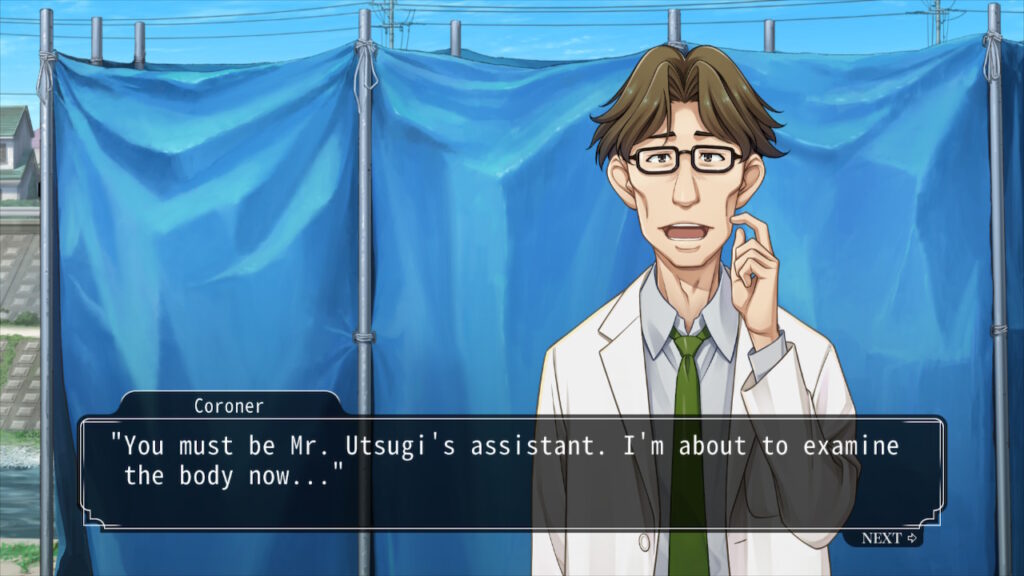
You’re looking at another $35 here and to be totally honest, even though the game feels a bit shorter, you’re probably getting more bang for your buck from Famicom Detective Club: The Girl That Stands Behind than you are from The Missing Heir. It’s just a better game overall with a more interesting story. That’s a shame because the first game is quite good in a lot of ways. But if you have to pick one, there’s no question that The Girl That Stands Behind is the way to go. Better pacing, better cinematography, and a more interesting plot make it easily the superior choice. If you’re not shy about spending double to get the full experience, you won’t be entirely disappointed however. The crossover between the two titles is satisfying and the feeling of completion that comes from finishing both titles is likely much more satisfying if you don’t skip The Missing Heir. This is a pair of games that were obviously designed to be played together and it would be a shame not to. If you know what you’re getting into, you probably won’t be disappointed with Famicom Detective Club: The Missing Heir or Famicom Detective Club: The Girl Who Stands Behind and they are both still better than a lot of visual novels flooding the market these days. While they aren’t perfect and they’re over three decades old, The Famicom Detective Club is probably going to have a lot more members soon.
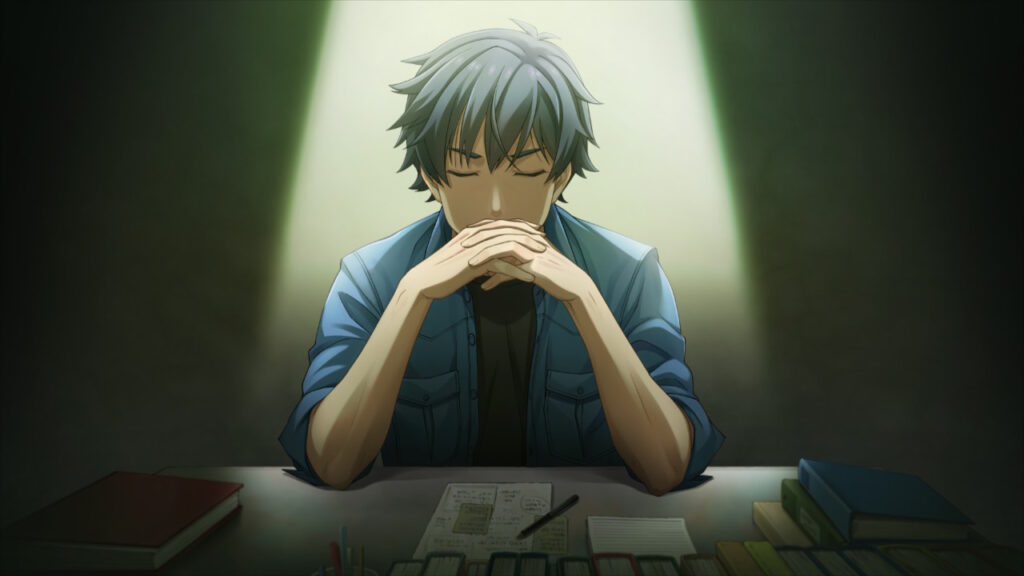
This review is based on digital copies of Famicom Detective Club: The Missing Heir and Famicom Detective Club: The Girl Who Stands Behind provided by the publisher. They were played on a Nintendo Switch in docked mode with a Nintendo Switch Pro controller as well as in undocked mode. Both games are exclusive to the Nintendo Switch. All screenshots are of actual gameplay.
In addition, for access to an extensive variety of active retro gaming groups on Facebook, visit Retro Gamers Hub.

